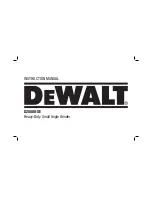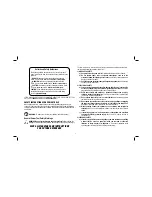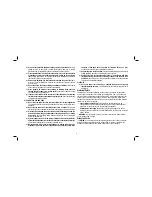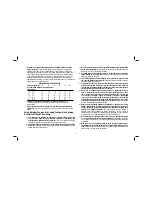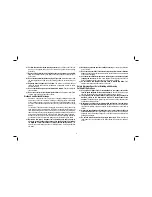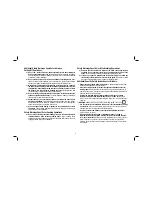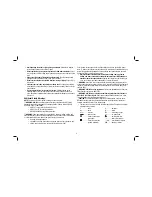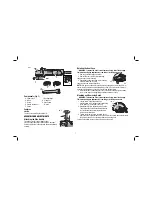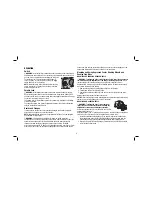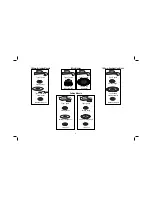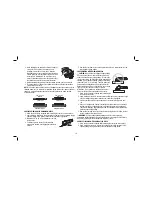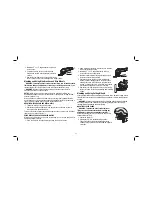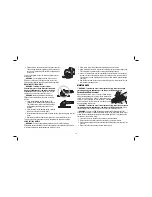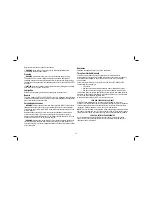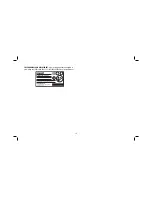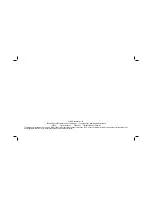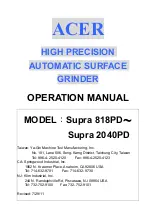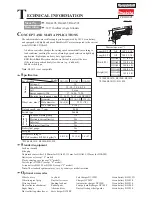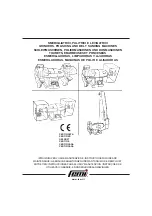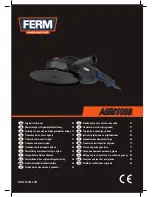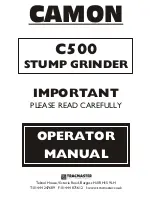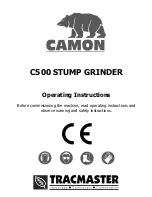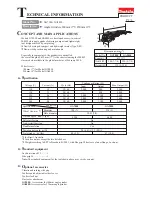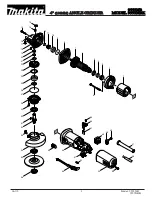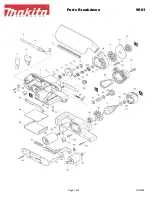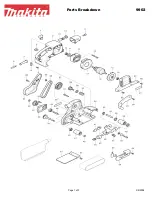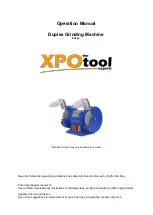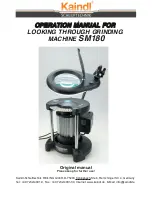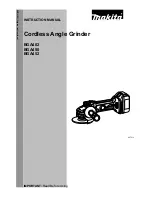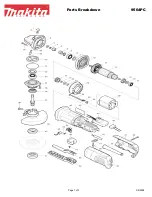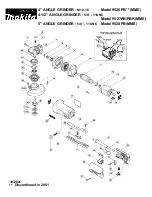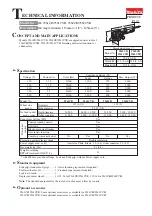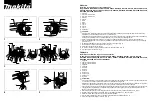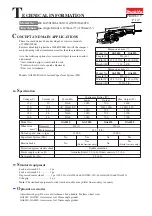
6
•
Avoid bouncing the wheel or giving it rough treatment.
If this occurs, stop the
tool and inspect the wheel for cracks or flaws.
•
Direct sparks away from operator, bystanders or flammable materials.
Sparks
may be produced while cutting and/or grinding. Sparks may cause burns or start
fires.
•
Always use side handle. Tighten the handle securely.
The side handle should
always be used to maintain control of the tool at all times.
•
Never cut into area that may contain electrical wiring or piping.
Serious injury
may result.
• Clean out your tool often, especially after heavy use.
Dust and grit containing
metal particles often accumulate on interior surfaces and could create an electric
shock hazard.
•
Do not operate this tool for long periods of time.
Vibration caused by the
operating action of this tool may cause permanent injury to fingers, hands, and
arms. Use gloves to provide extra cushion, take frequent rest periods, and limit daily
time of use.
Additional Safety Warnings
NOTE:
The rated no load tool speed is printed on the name plate.
WARNING: ALWAYS
use safety glasses. Everyday eyeglasses are NOT safety
glasses. Also use face or dust mask if cutting operation is dusty. ALWAYS WEAR
CERTIFIED SAFETY EQUIPMENT:
• ANSI Z87.1 eye protection (CAN/CSA Z94.3),
• ANSI S12.6 (S3.19) hearing protection,
• NIOSH/OSHA/MSHA respiratory protection.
WARNING:
Some dust created by power sanding, sawing, grinding, drilling, and
other construction activities contains chemicals known to cause cancer, birth defects
or other reproductive harm. Some examples of these chemicals are:
• lead from lead-based paints,
• crystalline silica from bricks and cement and other masonry products, and
• arsenic and chromium from chemically-treated lumber (CCA).
Your risk from these exposures varies, depending on how often you do this type of
work. To reduce your exposure to these chemicals: work in a well ventilated area, and
work with approved safety equipment, such as those dust masks that are specially
designed to filter out microscopic particles.
•
Avoid prolonged contact with dust from power sanding, sawing, grinding,
drilling, and other construction activities. Wear protective clothing and wash
exposed areas with soap and water.
Allowing dust to get into your mouth, eyes,
or lay on the skin may promote absorption of harmful chemicals.
WARNING:
Use of this tool can generate and/or disburse dust, which may cause
serious and permanent respiratory or other injury. Always use NIOSH/OSHA approved
respiratory protection appropriate for the dust exposure. Direct particles away from
face and body.
WARNING: ALWAYS use eye protection.
All users and bystanders must wear eye
protection that conforms to ANSI Z87.1.
WARNING: ALWAYS wear proper personal hearing protection that conforms to
ANSI S12.6 (S3.19) during use.
Under some conditions and duration of use, noise
from this product may contribute to hearing loss.
CAUTION:
Use extra care when working into a corner because a sudden, sharp
movement of the grinder may be experienced when the wheel or other accessory
contacts a secondary surface or a surface edge.
• The label on your tool may include the following symbols. The symbols and their
definitions are as follows:
V ................. volts
A ...............amperes
Hz ............... hertz
W ..............watts
min ............. minutes
...........alternating current
.......... direct current
no ..............no load speed
.............. Class I Construction
.............earthing terminal
...................
(grounded)
.............safety alert symbol
............... Class II Construction
…/min .......revolutions per minute
...................
(double insulated)
BPM ..........beats per minute
Summary of Contents for D28000-XE
Page 1: ...D28000 XE Heavy Duty Small Angle Grinder INSTRUCTION MANUAL ...
Page 2: ......
Page 17: ...15 ...
Page 18: ...16 ...
Page 19: ...17 ...

